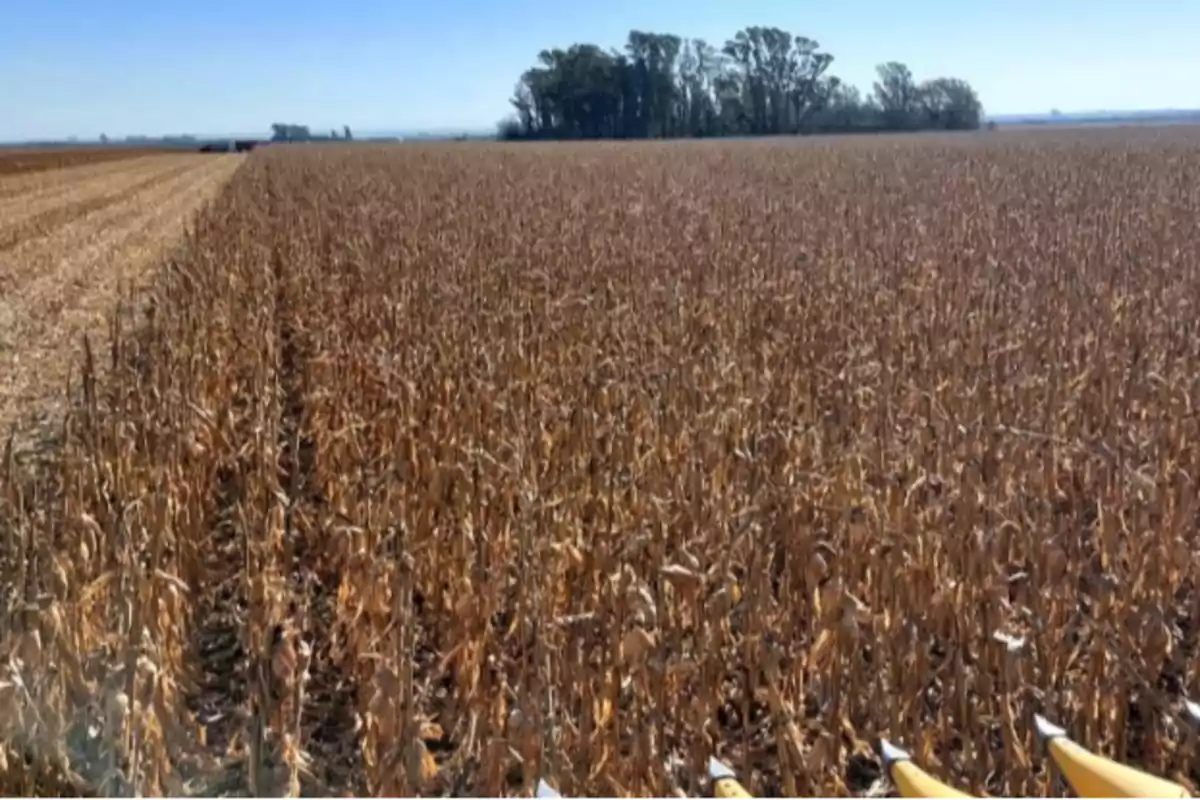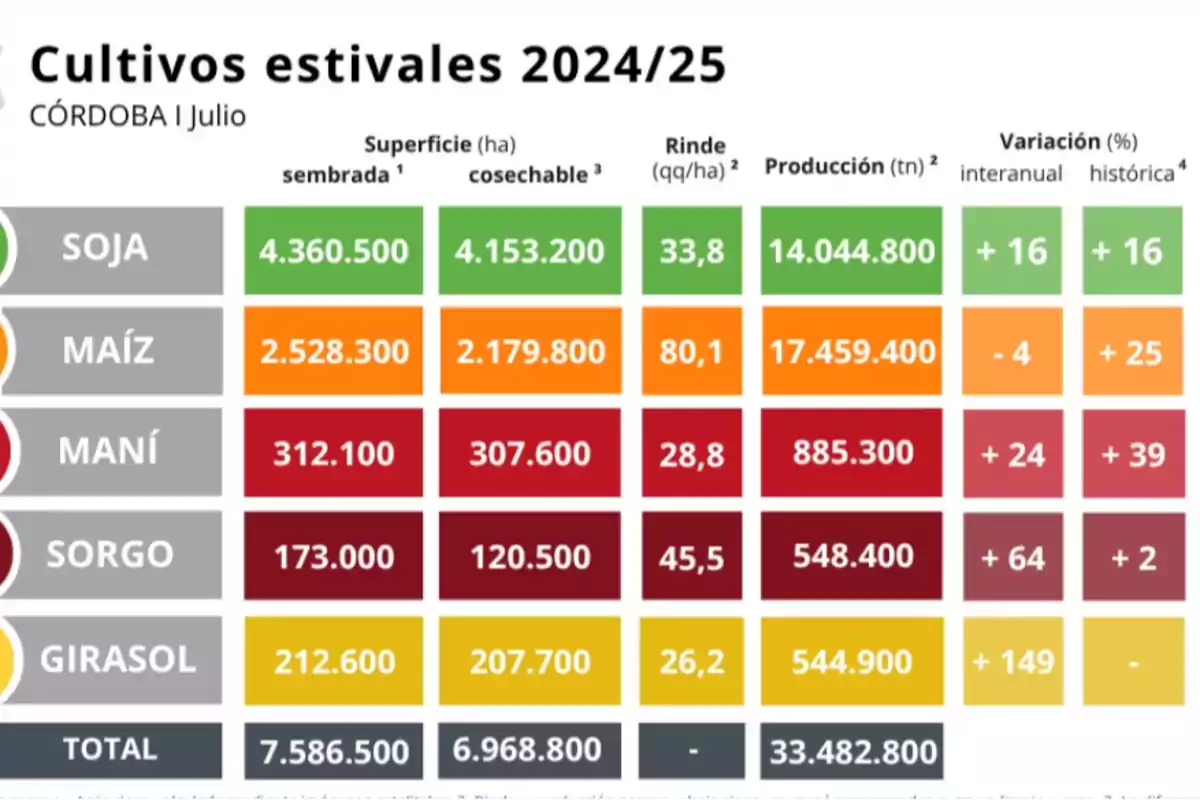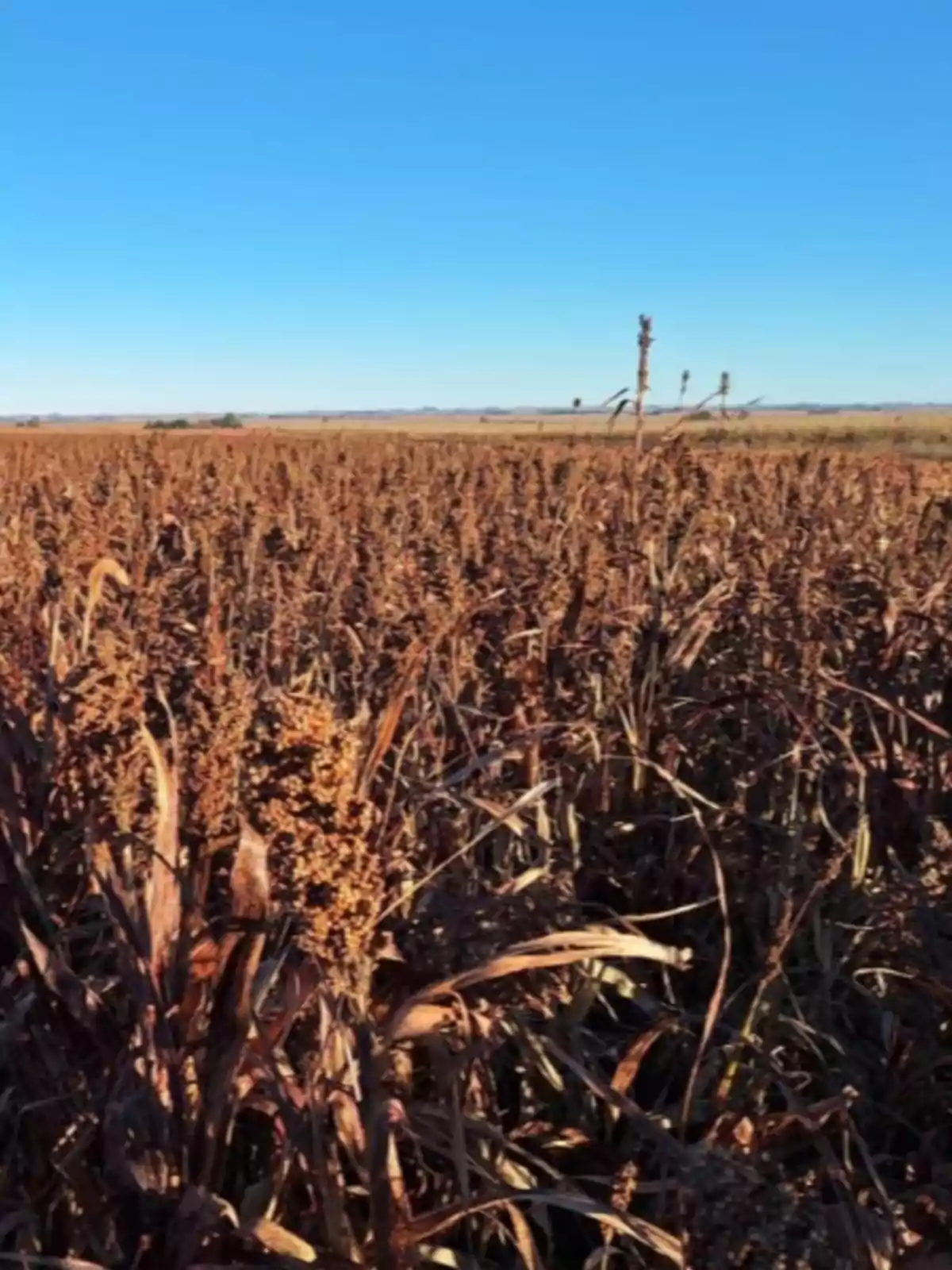
2024-25 season in Córdoba: good numbers for soybeans, peanuts, sunflower, and sorghum
The exception is corn, whose production fell according to a survey by the Córdoba Grain Exchange
According to the latest survey by the Córdoba Grain Exchange, in the 2024-25 season in the province soybean, peanut, sunflower, and sorghum production would increase. Conversely, corn production would decrease.
Among summer crops, sunflower stands out with interesting numbers. According to the entity, production would reach 544,900 tons, 149% more than in the previous season. The sown area was 212,600 hectares and yields were 26.2 quintals per hectare (qq/ha).

Meanwhile, soybean would reach a production of 14,044,800 tons, a 16% increase over the previous cycle. A total of 4,360,500 hectares were sown and the average yield was 33.8 qq/ha.
Sorghum, with 173,000 hectares sown, would climb to 548,400 tons, 64% more than in the 2023-24 season with an average yield of 45.5 qq/ha. Meanwhile, peanut rose to 885,300 tons, 24% more than in the previous cycle. The yield was 28.8 qq/ha.
The negative note would come from corn, which, with average yields of 80 quintals per hectare, produced 17,459,400 tons throughout the province, equivalent to 4% less than in the previous season.
What the Córdoba Grain Exchange report says
Average provincial yields show positive variations compared to last season's results, as do their productions, except for corn, which experienced a 22% reduction in area.
During July, the harvest of Córdoba's main summer crops progressed heterogeneously depending on the area. Although soybean and sunflower have already completed their cycle with good results, corn, peanut, and sorghum are still being harvested, with the latter being the closest to completion.

Among the crops still standing, sorghum stands out for its good performance, in line with the expansion recorded at the national level. In Córdoba, average yields range from 63 qq/ha in Marcos Juárez department to 38 qq/ha in General Roca, which demonstrates the crop's consolidation beyond its role as an alternative to corn or its use in marginal environments.
Regarding peanut, of which the largest area of the last seven seasons was sown, yields 20% higher than the historical average are expected. The highest yield of clean and dry grain, averaging irrigated and rainfed, would occur in Unión department with 39 qq/ha, and the lowest in San Javier, with 17 qq/ha, where high temperatures had a negative impact according to collaborators' comments.
What happened with corn in Córdoba
Meanwhile, corn, despite the exceptional average provincial yield—almost 20% higher than the previous season—, showed variability between areas and sowing dates, due to uneven rainfall and high temperatures during the critical period. The highest average yield (between irrigated and rainfed) was recorded in Marcos Juárez department with 111 qq/ha, while the lowest was observed in San Alberto, with 62 qq/ha.
This time, the presence of volunteer corn in the fields was surveyed, due to its importance as a refuge and food source for Dalbulus maidis. Reports of no or low presence predominated, attributed to the latest frosts, which acted as a control on volunteer corn.
Climatic context for the 2024-25 season
During June, rainfall was scarce in much of Córdoba's territory, with accumulations well below the historical average in most departments. This condition particularly favored peanut cultivation, allowing the harvest to progress, especially in areas where work had been delayed due to excess moisture.
More posts: